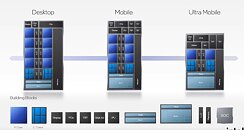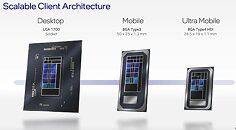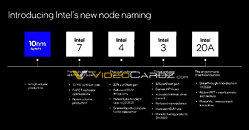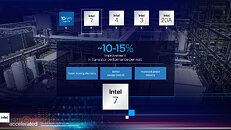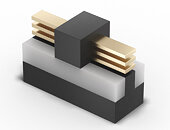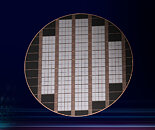
Intel Raptor Lake with 24 Cores and 32 Threads Demoed
When Intel announced the company's first hybrid design, codenamed Alder Lake, we expected to see more of such design philosophies in future products. During Intel's 2022 investor meeting day, the company provided insights into future developments, and a successor to Alder Lake is no different. Codenamed "Raptor Lake," it features a novel Raptor Cove P-core design that is supposed to bring significant IPC uplift from the previous generation of processors. Using Intel 7 processor node, Raptor Lake brings a similar ecosystem of features to Alder Lake, however, with improved performance across the board.
Perhaps one of the most exciting things to note about Raptor Lake is the advancement in core count, specifically the increase in E-cores. Instead of eight P-cores and eight E-cores like Alder Lake, the Raptor Lake design will retain eight P-cores and double the E-core count to 16. It was a weird decision on Intel's end; however, it surely isn't anything terrible. The total number of cores now jumps to 24, and the total number of threads reaches 32. Additionally, Raptor Lake will bring some additional overclocking improvement features and retain socket compatibility with Alder Lake motherboards. That means that, at worst, you would need to perform a BIOS update to get your previous system ready for new hardware. We assume that Intel has been working with software vendors and its engineering team to optimize core utilization for this next-generation processor, even though they have more E-cores present. Below, we can see Intel's demonstration of Raptor Lake running Blender and Adobe Premiere and the CPU core utilization.
Perhaps one of the most exciting things to note about Raptor Lake is the advancement in core count, specifically the increase in E-cores. Instead of eight P-cores and eight E-cores like Alder Lake, the Raptor Lake design will retain eight P-cores and double the E-core count to 16. It was a weird decision on Intel's end; however, it surely isn't anything terrible. The total number of cores now jumps to 24, and the total number of threads reaches 32. Additionally, Raptor Lake will bring some additional overclocking improvement features and retain socket compatibility with Alder Lake motherboards. That means that, at worst, you would need to perform a BIOS update to get your previous system ready for new hardware. We assume that Intel has been working with software vendors and its engineering team to optimize core utilization for this next-generation processor, even though they have more E-cores present. Below, we can see Intel's demonstration of Raptor Lake running Blender and Adobe Premiere and the CPU core utilization.






